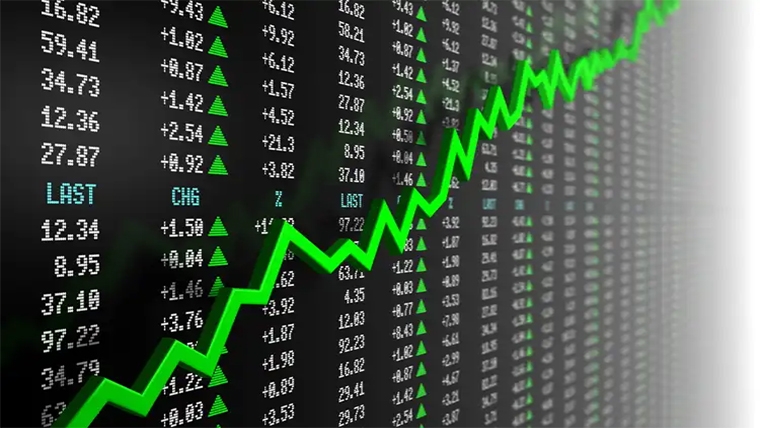
By Stuart Talman, XE currency strategist

Following on from their biggest daily drop for the year, US equities have stabilised, logging modest gains ahead of the release (0800) of the minutes from the February FOMC meeting.
The three major US equity indices declined by over 2% on Wednesday, risk sentiment souring on expectations of a higher peak fed funds rate with the policy rate held higher for longer. This narrative has propelled US yields higher throughout February.
The yield on the US 10-year bond reached 4.97% in overnight trade. The market will become increasingly jittery should the 4% level be breached for the first time since early November.
The US dollar has benefitted, the dollar index climbing close to 4% over the past few weeks.
The New Zealand dollar sits atop the G10 leader board, gaining around a third-of-a-percent to maintain a foothold above 62 US cents for the time being. Price action has ranged between 0.6190 and 0.6260 over the past week, NZDUSD looking vulnerable to further downside should 0.6190 support fail.
The catalyst for the Kiwi’s relative outperformance against its major peers was yesterday’s RBNZ interest rate decision and accompanying statement. The key takeaways:
- RBNZ hikes by 50bps to 4.75%
- Maintains OCR track, peak near 5.50%
- Too early to assess Cyclone Gabrielle effects
Given a 50bps hike was universally expected, market reaction was caused by the accompanying statement and projections. The policy update was viewed through a hawkish lens given the minutes recorded the board considered 50bps vs 75bps.
There were expectations that given the recent easing in inflation data and tentative signs of easing labour market tightness, the RBNZ would revise its OCR track lower, however this was not the case, the peak rate remaining projected near 5.50%.
The board commenting in the statement:
“While there are early signs of price pressure easing, core consumer price inflation remains too high, employment is still beyond its maximum sustainable level, and near-term inflation expectations remain elevated.”
The RBNZ acknowledged the effects of Cyclone Gabriel with appropriate empathy, commenting that it is too early to determine the impact on economic growth and inflation.
“Monetary policy is set with a medium-term focus, and the Committee will look through these short-term output variations and direct price effects.”
The RBNZ’s upcoming MPRs are held in April (05), May (24) and July (12). The expected near term policy path – either another 50bps hike in April , followed by 25bps and a pause…..or, 25bps at each of the next three meetings.

Earlier in the day, the Kiwi looked likely to fall below 62 US cents following Tuesday’s overnight sell-off. Immediately following the RBNZ decision, NZDUSD spiked from near 0.62 into the 0.6240’s before chopping around through Wednesday’s offshore sessions.
Should yields continue to rise in the US, the Kiwi will struggle to hold levels above 62 US cents.
Firmer against the EUR, GBP and JPY, the Kiwi’s largest gains occurred against the Aussie dollar, adding close to 1%, ripping back up to 0.9150.
In addition to a (somewhat) hawkish RBNZ, weaker than expected wages data across the Tasman was the catalyst for the Kiwi’s outperformance. Whilst wage price growth for the Australian economy reached its highest level since 2012, the annualised figure of +3.3% was below the consensus forecast of +3.5%.
Wage price index data is an important input for the RBA when deciding on the path for monetary policy. Despite the downside miss, the trend in wages growth remains tilted to the upside, therefore not likely to shift the RBA’s recent hawkish tilt.
Regardless, the data point was a factor in driving the rate sensitive antipodean cross higher.
We have been calling for NZDAUD to base and then enter a period of consolidative trade – yesterday’s events and subsequent reaction may validate that view. We look for a 0.9050 – 0.9300 range to form over the coming weeks.
To the day ahead, FOMC minutes released shortly are the next 24 hours major event. We have received a plethora of hawkish Fed-speak over the past few weeks, which vegs the question – will the minutes provide ay new insights into the Fed’s psyche?
Perhaps.
If the minutes suggest it was closer to a line-ball call for 25bps vs 50bps, the market may react, risk assets trading lower. Given the recent run of hot data, odds for a 50bps hike at the 22 March FOMC meeting are climbing.
Central bank speakers, eurozone inflation data and a preliminary reading of US GDP are the other events in focus throughout Thursday.
The RBNZ’s mildly hawkish update saved the Kiwi from dipping below 62 US cents yesterday…..we hold our view that key support at 0.6190 will cave.
Daily exchange rates
Select chart tabs
Stuart Talman is Director of Sales at XE. You can contact him here.

We welcome your comments below. If you are not already registered, please register to comment.
Remember we welcome robust, respectful and insightful debate. We don't welcome abusive or defamatory comments and will de-register those repeatedly making such comments. Our current comment policy is here.